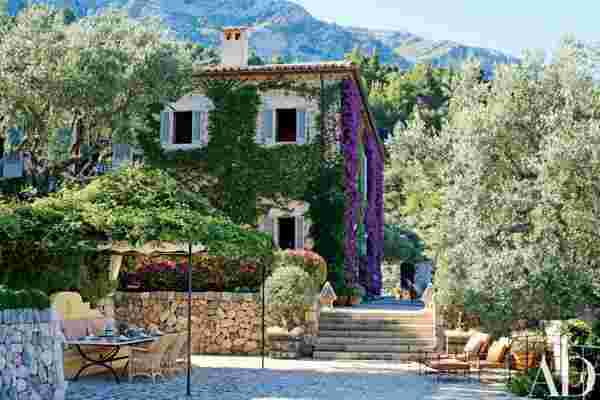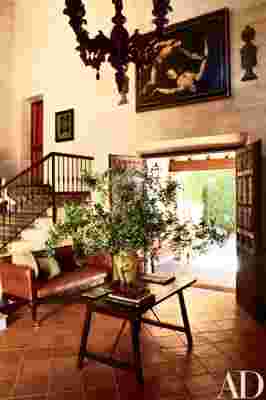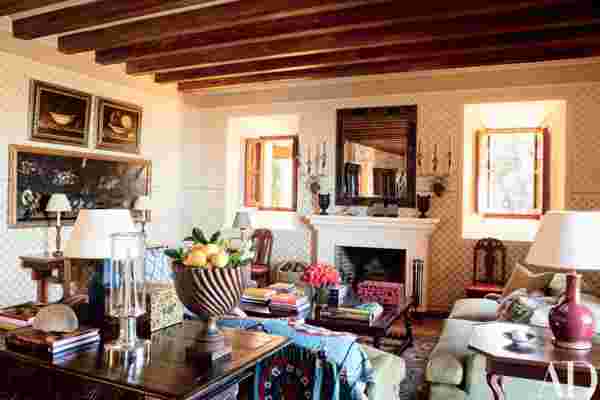This article originally appeared in the November 2013 issue of Architectural Digest.
In the age of demolition-minded television design shows, most home-makeover stories tend to wow you with the “after” by leaving little trace of the lackluster “before.” But inspired decorating can be just as transformational as a gut job. Without moving a single wall, interior designer Michael S. Smith dramatically reimagined a retreat on the Spanish island of Majorca for a couple who are his longtime friends and clients.
Built in 1992 on a hillside plot with commanding views of the Mediterranean Sea and Tramuntana mountains, the villa-style residence comprises two structures. The main building features a double-height entry, an inviting living room, and an airy kitchen, all surrounding a small courtyard, with the master quarters plus a spare bedroom upstairs. Across an intricately laid stone terrace stands a three-story guesthouse that contains a trio of stacked suites.
As good as the place sounds it wasn’t exactly love at first sight for Smith’s clients. “The house was perfect in terms of its plan, proportions, and location,” says the designer, who was vacationing on the island with the husband and wife when they decided to look for their own getaway there. “But the two of them initially resisted the property because they didn’t think it could ever feel like a true Majorcan estate,” he says, explaining that the existing interiors were cold, dissonant, and charmless. “There was no patina or sense of permanence, and it was missing the layered, unifying aesthetic that makes a house a home.”
Smith convinced his clients that he could conjure that timeworn look, so they bought the residence, and soon the designer set about researching regional furnishings, textiles, and patterns. To get the mix just right, he considered not only the decorative traditions of Spain but also those of England, France, Italy, and Northern Africa—places whose influence has washed over Majorca throughout the centuries.
The ensuing overhaul, Smith notes, “was pure decorating.” He started with paint, embellishing many of the walls in a range of motifs traditional to the area, from the stenciled latticework in the living room to the hand-rendered botanicals in the master bath. For the main entry, he opted for a Venetian-plaster trompe l’oeil treatment that resembles large honed-stone blocks, making the house feel a bit grander than its rustic masonry façade might suggest. “It’s the first room people encounter, so it sets the tone,” Smith says.
The most significant renovation took place in the kitchen, which was buoyed by the removal of some overhead cabinets and brought to life with stretches of Alhambra-style tiles that Smith had custom made after examples dating from the 16th century. The Mediterranean vibe is reinforced by the adjoining courtyard, which lets in light and draws cooling breezes through the windows.



While choosing textiles Smith was delighted to discover that one of his all-time favorite fabrics, a blue-and-white flame stitch, or tela de lenguas, was handwoven right on the island. The print appears throughout the home, on chairs, as curtains, and even covering the walls of a guest room. On the floors, meanwhile, traditional woven-rush mats mingle with fine Persian carpets. That eclectic high-low mix appeals strongly to the homeowners, avid art collectors who split their time between Majorca, New York, London, and Los Angeles.
